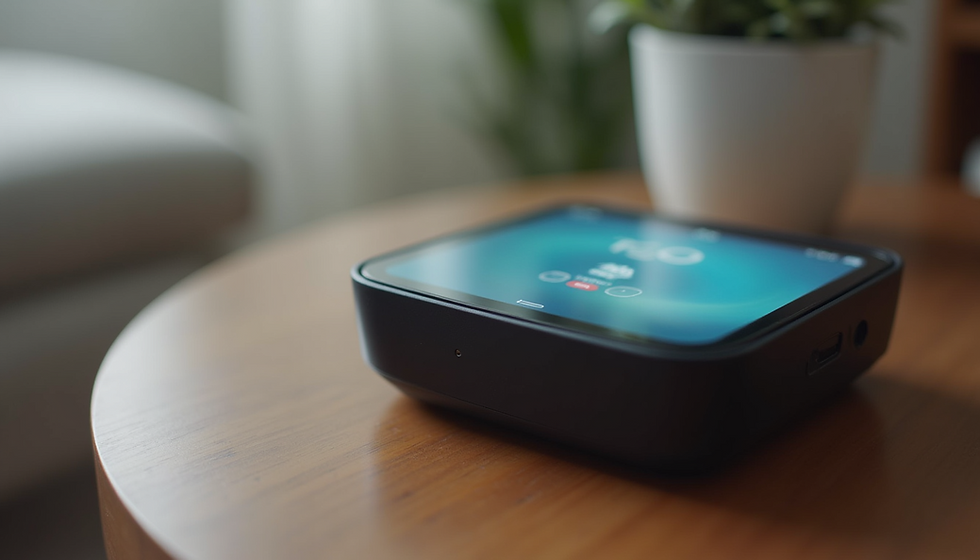Tech Tips and Security Advice for Safeguarding Your Personal Devices
- David Keeton, Jr.

- Jul 3
- 4 min read
In our fast-paced digital world, personal devices are crucial to our daily lives. They keep us connected, store our cherished memories, and grant us access to endless information. However, this convenience also brings the responsibility to keep our devices secure. With cyber threats constantly evolving, it's essential to understand the risks and proactively protect our personal information. Below are practical tips and strategies that will help you safeguard your devices effectively.
Understanding the Risks
Understanding the threats to your devices is the first step in protection. Cybercriminals are always innovating new tactics to infiltrate your accounts and steal personal data. For example, the FBI reported that phishing scams alone accounted for over $54 million in losses in 2021. By recognizing these risks, such as malware, phishing, and data breaches, you can take appropriate measures to defend against them.
Keep Your Software Updated
Regular software updates are among the simplest and most effective security practices. Companies frequently issue updates to patch vulnerabilities. In fact, Mozilla found that 60% of online attacks exploit known vulnerabilities. By enabling automatic updates on your devices, you can avoid falling victim to these risks and ensure you have the latest fixes in place.
Use Strong, Unique Passwords
Strong, unique passwords are your first line of defense in protecting your online accounts. A secure password should include:
A mix of uppercase and lowercase letters
Numbers
Special characters
Avoid using easily guessed information like birthdays or pet names. A password manager can help you create and store unique passwords, enhancing your security significantly. Research shows that using a password manager can reduce the risk of account takeover by 80%.
Enable Two-Factor Authentication
Two-factor authentication (2FA) provides an additional security layer for your accounts. It requires a second form of verification, like a text message code or an authentication app. According to Google, 2FA can block 100% of automated bots and approximately 90% of targeted attacks, making it a vital step in keeping your accounts safe.

Be Wary of Public Wi-Fi
Public Wi-Fi, commonly found in cafes and airports, poses significant security threats. These networks are generally less secure and can expose your data to cybercriminals. If you need to connect, consider using a Virtual Private Network (VPN). According to a study by NordVPN, using a VPN can lower the risk of data breaches by 70% when on public networks.
Regularly Back Up Your Data
Consistent data backups are key to safeguarding your information. In the event of a device failure or security breach, having a recent backup means you won't lose important files. Use reliable cloud storage solutions or external hard drives. Aim to back up your data at least once a month or whenever significant updates are made to your files.
Secure Your Internet Connection
Your home network needs robust security as well. Start by changing your router’s default username and password to something unique and complex. Ensure your Wi-Fi network uses WPA3 encryption, if available, which offers improved security over older protocols. A recent survey indicated that homes with unsecured Wi-Fi networks are 300% more likely to experience unauthorized access.
Monitor Your Device for Unusual Activity
Stay alert for any unusual behavior on your devices. Signs like strange slowdowns, frequent app crashes, or unfamiliar programs can indicate compromise. If you suspect your device has been breached, run a malware scan immediately. Often, removing suspicious software can restore normal function swiftly.
Use Anti-Virus Software
A trustworthy anti-virus program is vital for preventing malware and other security threats. Look for software that offers real-time protection and regular vulnerability scans. According to industry experts, regularly updating anti-virus signatures can catch 90% of new threats, so make updating a priority.
Be Cautious with Downloaded Apps
Only download apps from recognized sources like official app stores. Before installation, explore app permissions and ensure they are reasonable. For instance, a simple flashlight app shouldn’t request access to your contacts or location. Checking user reviews can also help you identify potentially harmful apps.

Disable Bluetooth When Not in Use
Although Bluetooth is convenient, it can expose your device to security risks if left enabled. Turn off Bluetooth when you're not using it to prevent unauthorized access to your data. This simple habit can significantly reduce the chance of data breaches through this connection.
Educate Yourself on Phishing Scams
Phishing scams often come in the form of fake emails or messages designed to steal information. Be cautious and look for warning signs like poor grammar, unfamiliar sender addresses, or strange links. According to the Anti-Phishing Working Group, there were over 240,000 phishing sites reported in just one month in 2022, demonstrating the need for constant vigilance.
Staying Ahead of Cyber Threats
As we rely more on personal devices, ensuring their security has never been more crucial. By following these easy-to-understand tech tips and security measures, you can significantly lower your risk of falling victim to cyber threats. Remember, staying informed and proactive is key. Taking these steps today will create a safer experience for you and protect your sensitive information now and in the future.



